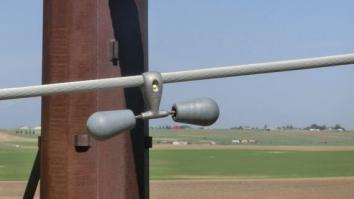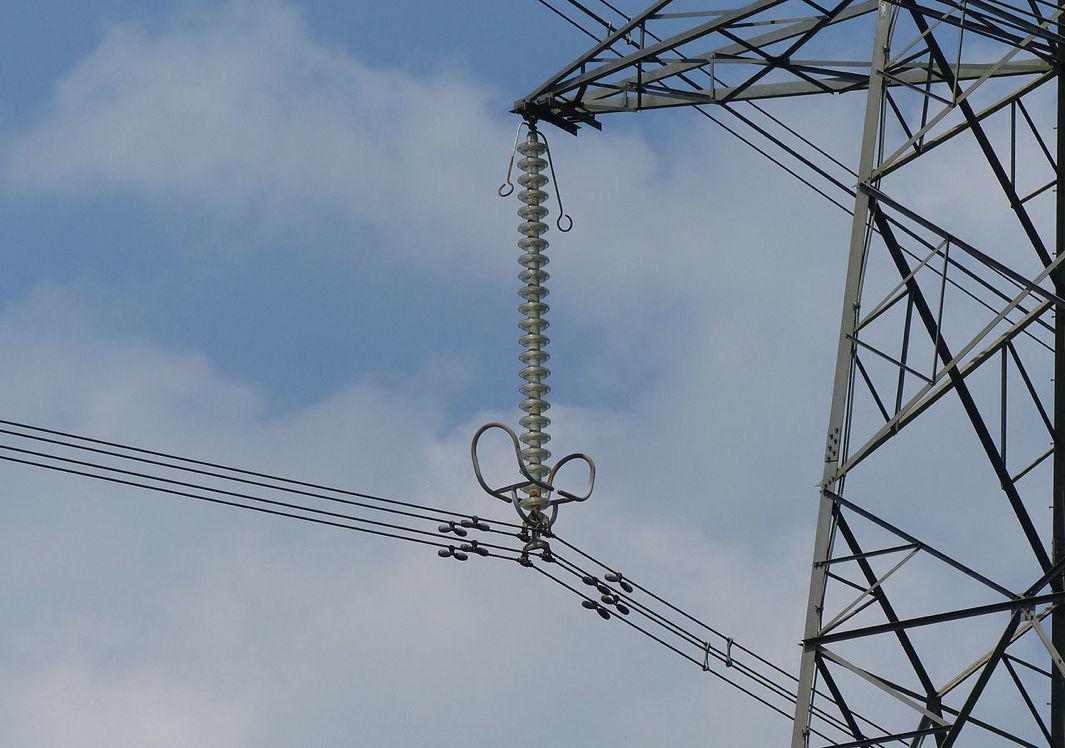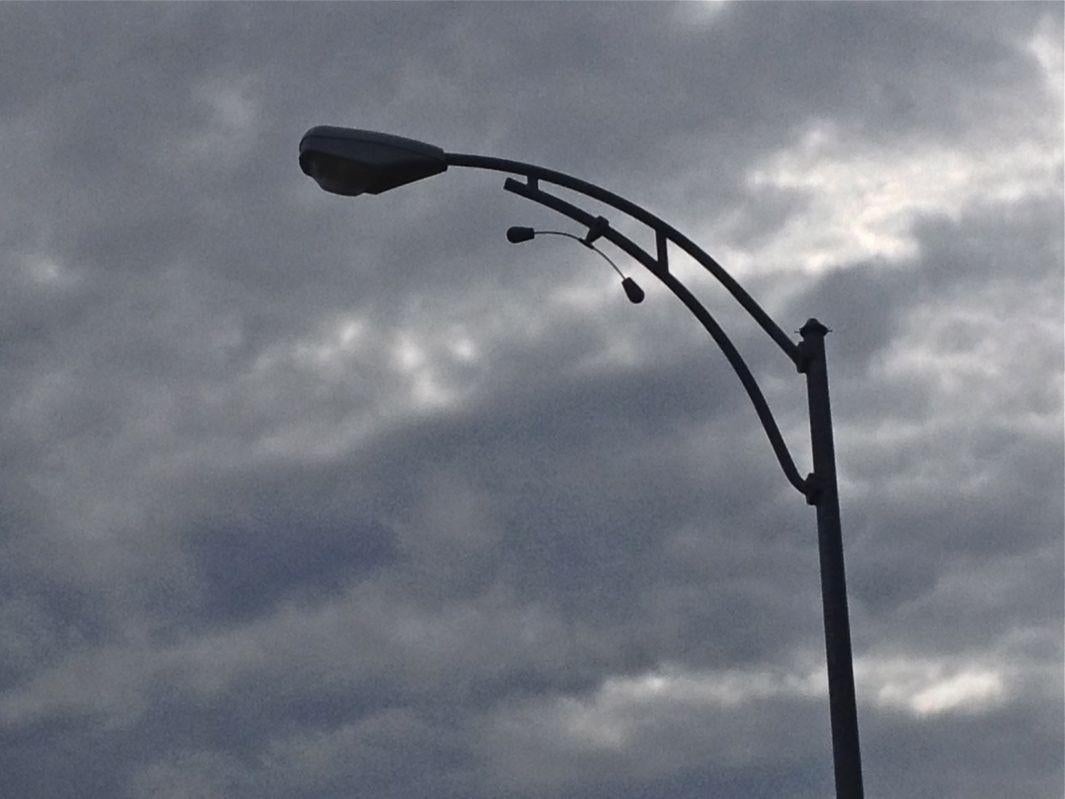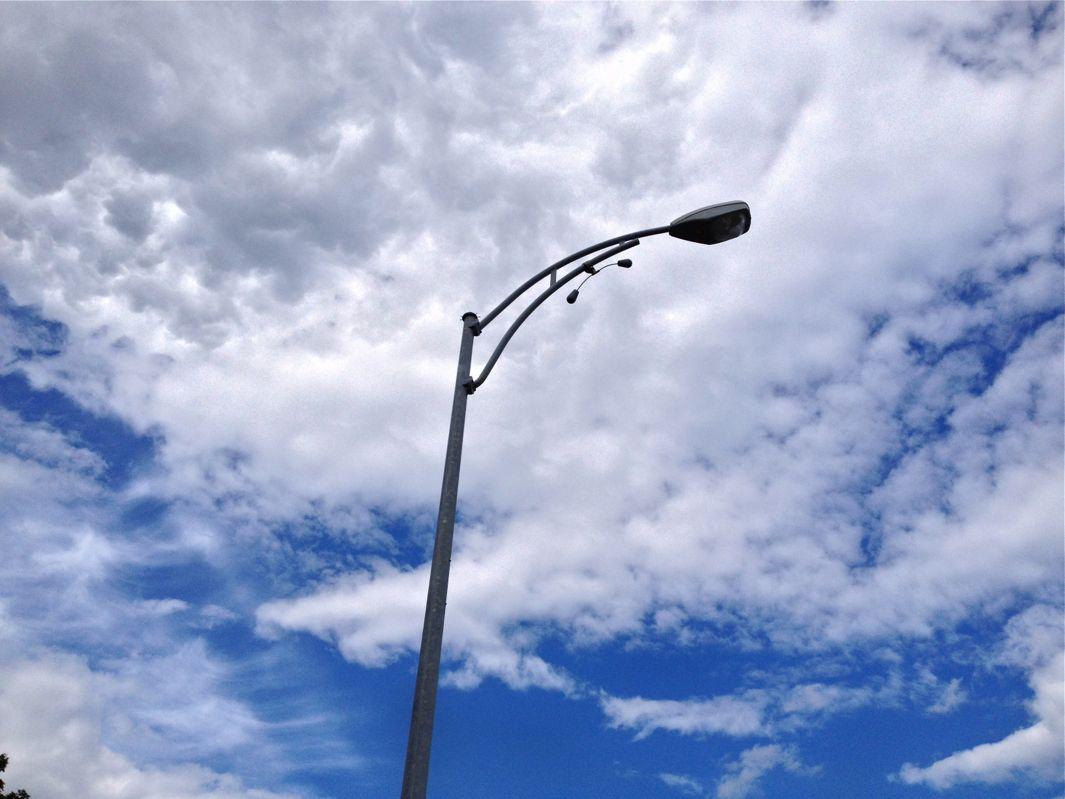What’s That Thing is Slate’s column that examines the details of the world that are hiding in plain sight. Send ideas for future columns, along with photos if possible, to whatisthat@markvr.com.
Like all scientists, biologist Craig M. Story is accustomed to wondering about the world around him. Baffled by the purpose of small dumbbell-shaped devices he spotted on lampposts in eastern Massachusetts, he Googled “lamp object,” “lamp thing,” and “lamp post object” in vain, before posting a photo and a cry for help on Facebook.
Hypotheses came fast and furious. Microphones? Maybe a “Brown Betty mesh node wide area network for public utilities”? Devices for tracking light pollution? “Dingleberries”?

Courtesy of AFL Global

Courtesy of AFL Global
These puzzling devices are called Stockbridge dampers. Their purpose is to protect slender structures such as cables, power lines, and lampposts from wind-induced vibrations.
I never thought of lampposts as particularly delicate, but Steven Kranz, an engineer at Stockbridge damper manufacturer AFL, explained that certain types of structures are prone to vortex shedding, an alternating low-pressure region downstream of an object that is induced by the passage of a fluid—like air or water—at certain speeds. This in turn can induce an oscillating motion in the structure itself. Picture a stick that starts to twitch back and forth when placed in a fast-moving stream of water, he said. These vibrations can fatigue the structure and eventually lead to failure.

Stockbridge dampers near Castle Combe, England.
Courtesy of Adrian Pingstone/Wikimedia Commons
So how do Stockbridge dampers actually work? In simple terms, Kranz says, the vibration in the structure is dampened “through the shaking of the two weights on either end of the damper.”
Kranz says that anticipated wind speed is one of the most important factors in determining which lampposts and cables get Stockbridge dampers. In general terms, higher wind speeds mean higher frequency vibrations, which mean more fatigue in the structure. So, for example, windy and wide-open Australia is more “prone to Aeolian vibration fatigue” than most countries. Another factor is the tension applied to the line itself—something engineers must consider when designing an electrical line, which may lead to a decision to install dampers.
Stockbridge dampers have been around for a while. A patent was issued to George—wait for it—Stockbridge in 1928. As Stockbridge wrote in his patent application, “My invention relates to means for preventing objectionable vibration in suspended cables … its salient object is to provide a simple, practical, and effective device for this purpose.”

Courtesy of Craig M. Story
I asked Massoud Amin, a senior member of the Institute of Electrical and Electronics Engineers, if Stockbridge dampers will still be around in 50 years. Quite likely, he said. But he mentioned the possibility that smart self-healing materials or even nanowires might reduce the need for Stockbridge-style dampers. He also pointed out the effects of climate change on extreme weather and wind speeds, which could mean we’ll be seeing a lot more dampers in years to come.
And if you’re planning to walk a tightrope over Niagara Falls or the Grand Canyon, you’ll want to make sure to have some Stockbridge dampers.
See something in the city or the countryside that you’re wondering about? Send a pic and description to whatisthat@markvr.com.
